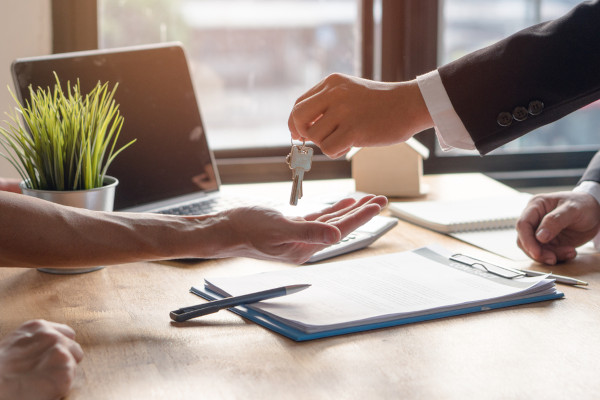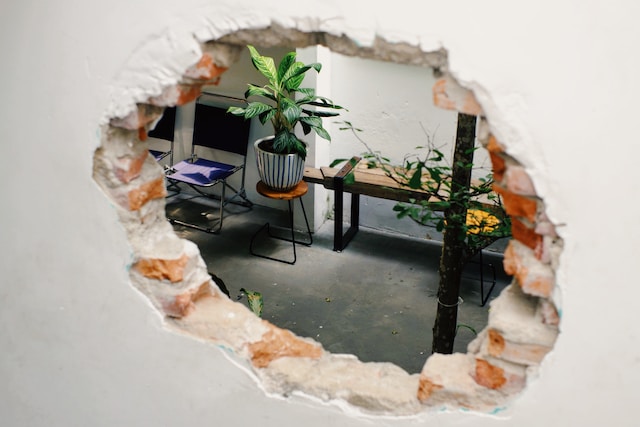The Ultimate Guide to Renting a Self-Building House:
What You Need to Know
Self-building houses, also known as self-build homes, are properties that are constructed by the homeowners themselves rather than by a developer or construction company. This means that the homeowners have full control over the design, layout, and materials used in their home. Self-building houses have gained popularity in recent years due to the numerous benefits they offer.
One of the main benefits of self-building houses is the ability to create a home that perfectly suits your needs and preferences. With a self-build, you have the freedom to design every aspect of your home, from the number of rooms to the layout of the kitchen. This allows you to create a space that is tailored to your lifestyle and tastes.
Another advantage of self-building houses is the potential for cost savings. By acting as your own project manager and hiring contractors directly, you can avoid the markup that developers often charge. Additionally, you have control over the materials used in your home, which means you can choose cost-effective options without sacrificing quality.

Choosing the Right Location for Your Self-Building House
When it comes to choosing a location for your self-building house, there are several factors to consider. First and foremost, you'll want to think about proximity to amenities such as schools, shops, and healthcare facilities. It's also important to consider transportation links and access to major roads or public transportation.
Researching the area is crucial before making a decision. Look into local property values and trends to ensure that your investment will hold its value over time. Consider the potential for future development in the area, as this can impact property prices.
Additionally, it's important to consider the natural surroundings of the location. Are there any environmental factors that could affect your enjoyment of the property? For example, if you're considering building near a body of water, you'll want to research flood risk and any restrictions on development.
Understanding the Legal Requirements for Self-Building Houses
Before embarking on your self-building project, it's important to understand the legal requirements involved. This includes obtaining the necessary permits and complying with building regulations.
Permits are typically required for any major construction project, including self-building houses. These permits ensure that your project meets safety and environmental standards. The specific permits required will vary depending on your location, so it's important to research the requirements in your area.
Building regulations are another important consideration. These regulations set out the minimum standards for design, construction, and energy efficiency. It's important to familiarize yourself with these regulations and ensure that your plans comply with them.
Hiring professionals such as architects and engineers can be beneficial when navigating the legal requirements of self-building houses. These professionals have experience in dealing with permits and regulations and can help ensure that your project is compliant.
Planning and Designing Your Self-Building House: Key Considerations
Planning and designing your self-building house is an exciting process that allows you to create a home that perfectly suits your needs and preferences. However, it's important to approach this stage of the project with careful consideration.
Start by identifying your needs and wants for your new home. Consider factors such as the number of bedrooms, bathrooms, and living spaces you require. Think about any specific features or amenities that are important to you, such as a home office or a large kitchen.
Working with an architect can be extremely helpful during the planning and design stage. An architect can take your ideas and translate them into a practical and aesthetically pleasing design. They can also help you navigate any design challenges or restrictions that may arise.
During this stage, it's also important to consider future needs. Think about how your lifestyle may change over time and how your home can accommodate these changes. For example, if you plan on starting a family, you may want to include extra bedrooms or a playroom in your design.
Finding the Right Contractor for Your Self-Building Project
Finding the right contractor for your self-building project is crucial to its success. Take the time to research and interview potential contractors to ensure that they are a good fit for your project.
Start by asking for recommendations from friends, family, or other homeowners who have completed self-building projects. Word-of-mouth referrals can be a valuable resource when it comes to finding reliable and reputable contractors.
When interviewing potential contractors, ask about their experience with self-building projects and request examples of their previous work. It's also important to ask about their availability and timeline for completing your project.
Checking references is another important step in finding the right contractor. Contact previous clients and ask about their experience working with the contractor. Were they satisfied with the quality of work? Did the contractor meet deadlines and stay within budget?
Budgeting for Your Self-Building House: Tips and Strategies
Creating a realistic budget is essential when it comes to self-building houses. Without a clear budget in place, costs can quickly spiral out of control. Here are some tips and strategies for budgeting your self-build project:
- Start by determining how much you can afford to spend on your self-build project. Consider factors such as your savings, any loans or mortgages you may need, and any additional sources of funding.
- Research the costs associated with self-building houses in your area. This includes materials, labor, permits, and any additional fees or taxes.
- Create a detailed budget that includes all anticipated costs. Be sure to include a contingency fund for unexpected expenses.
- Regularly review and update your budget throughout the construction process. This will help you stay on track and make any necessary adjustments.
- Consider cost-saving measures such as sourcing materials from local suppliers or using recycled or reclaimed materials.
- Don't forget to budget for landscaping and any additional finishing touches such as furniture or appliances.
Understanding the Building Process: From Foundations to Finishing Touches
Understanding the building process is crucial when it comes to self-building houses. This will help you stay informed and ensure that your project stays on track. Here are the key phases of construction:
- Site preparation: This involves clearing the land, leveling the ground, and preparing the site for construction.
- Foundations: The foundations are laid, which provide a solid base for the structure of the house.
- Framing: The framework of the house is constructed, including walls, floors, and roof trusses.
- Plumbing and electrical: The plumbing and electrical systems are installed, including pipes, wires, and fixtures.
- Insulation and drywall: Insulation is added to the walls and ceilings, followed by the installation of drywall.
- Interior finishes: This includes installing flooring, painting walls, and adding any additional finishes such as trim or molding.
- Exterior finishes: The exterior of the house is completed, including siding, roofing, and landscaping.
Throughout the building process, it's important to maintain open communication with your contractor. Regularly check in on progress and address any concerns or issues that arise.
Choosing the Right Materials for Your Self-Building House
Choosing the right materials for your self-building house is an important decision that can impact both the aesthetics and functionality of your home. Here are some factors to consider when making this decision:
- Durability: Look for materials that are durable and will stand up to wear and tear over time. This includes materials such as brick or stone for exterior walls and hardwood or tile for flooring.
- Maintenance: Consider how much maintenance each material requires. Some materials may require regular upkeep or special cleaning products.
- Energy efficiency: Choose materials that are energy-efficient to help reduce your carbon footprint and lower your energy bills. This includes options such as double-glazed windows and insulation with a high R-value.
- Aesthetics: Consider the overall look and feel you want to achieve in your home. Choose materials that complement your design style and create the desired atmosphere.
- Cost: Take into account the cost of materials when making your decision. Consider both the upfront cost and any long-term savings or benefits.
Sustainable and eco-friendly options are becoming increasingly popular in self-building houses. These materials are not only better for the environment but can also help improve the energy efficiency and overall performance of your home.
Energy-Efficient Self-Building Houses: What You Need to Know
Energy-efficient homes offer numerous benefits, including reduced energy bills, improved comfort, and a smaller carbon footprint. When building your self-building house, there are several ways you can incorporate energy-efficient features:
- Insulation: Proper insulation is crucial for maintaining a comfortable indoor temperature and reducing energy loss. Choose insulation with a high R-value for maximum efficiency.
- Windows: Opt for double or triple-glazed windows with low-emissivity coatings to reduce heat loss and gain.
- Heating and cooling systems Choose energy-efficient heating and cooling systems, such as heat pumps or geothermal systems, that use less energy to maintain a comfortable temperature.
- Lighting: Use LED or CFL bulbs throughout your home, which use less energy than traditional incandescent bulbs.
- Appliances: Select energy-efficient appliances that have earned the ENERGY STAR label, indicating that they meet strict efficiency standards.
- Renewable energy: Consider incorporating renewable energy sources such as solar panels or wind turbines into your design.
By incorporating these features into your self-building house, you can significantly reduce your energy consumption and lower your environmental impact.
Maintaining Your Self-Building House: Tips for Long-Term Success
Once your self-building house is complete, it's important to establish a regular maintenance routine to ensure its long-term success. Here are some tips for maintaining your self-building house:
- Regularly inspect your home for any signs of damage or wear and tear. This includes checking for leaks, cracks, or pests.
- Keep up with routine maintenance tasks such as cleaning gutters, changing air filters, and servicing HVAC systems.
- Address any repairs or issues promptly to prevent further damage or costly repairs down the line.
- Consider preventative measures such as installing a security system or implementing a regular pest control program.
- Stay informed about any manufacturer warranties or guarantees that may be in place for materials or appliances in your home.
Regular maintenance and preventative measures will help keep your self-building house in good condition and ensure that it continues to meet your needs for years to come.

Making Your Self-Building Dream a Reality
Self-building houses offer numerous benefits, from the ability to create a home that perfectly suits your needs to potential cost savings. By carefully considering factors such as location, legal requirements, planning and design, and budgeting, you can make your self-building dream a reality.
Remember to take the time to research and interview potential contractors, check references, and choose materials that are both durable and energy-efficient. Once your self-building house is complete, establish a regular maintenance routine to ensure its long-term success.
With careful planning and consideration, you can create a self-building house that is not only a reflection of your personal style but also a comfortable and sustainable home for you and your family.